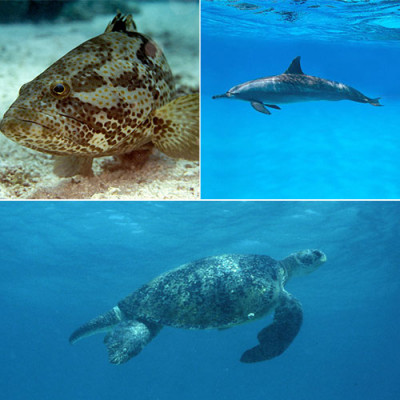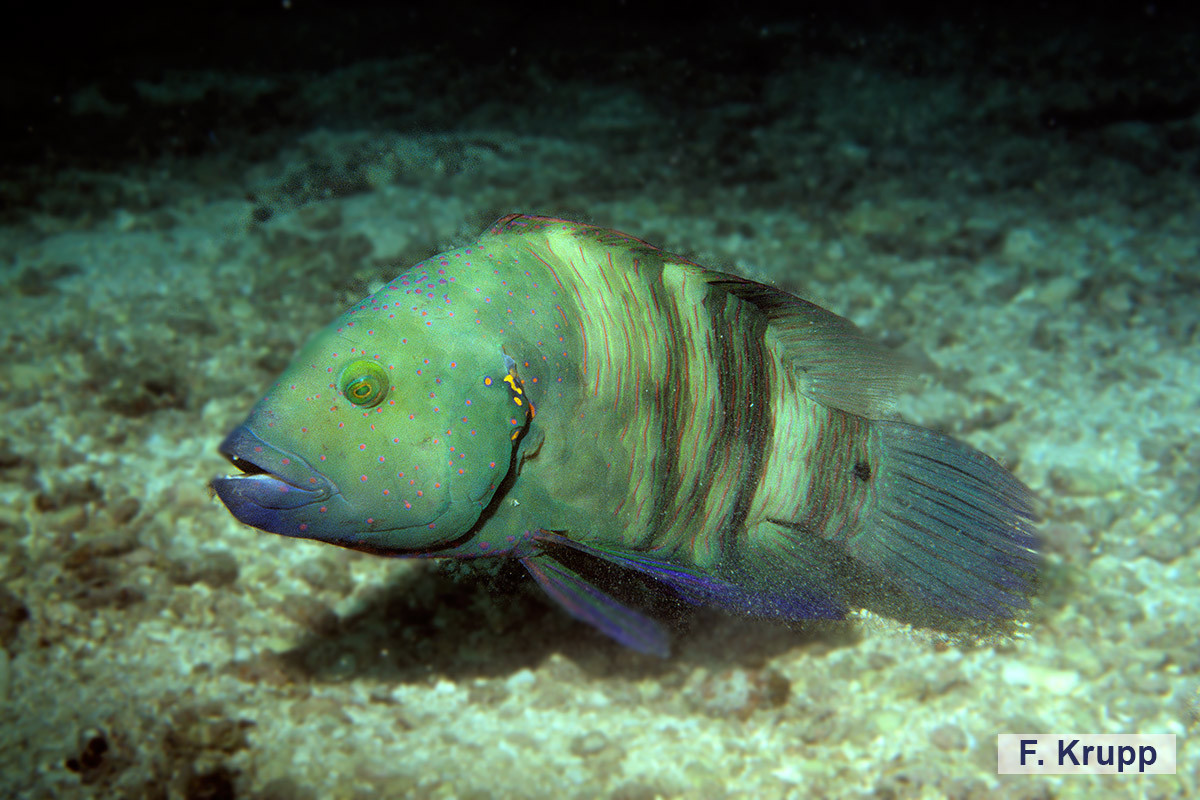Name: Broomtail Wrasse
Local name: Meelag
Scientific name: Cheilinus lunulatus
Classification: Class: ray-finned fishes; Order: perch-likes; Family: wrasses (Labridae)
Size: It attains 50 cm in total length.
Habitat:
The species inhabits coral areas and adjacent rubble, but may also be found over sand or seagrass beds from shallow water down to depths of 30 m, feeding mainly on hard-shelled invertebrates, especially mollusks. It lives as individuals and mature males are territorial and haremic. The Broomtail Wrasse is oviparous, with distinct pairing during breeding.
Distribution:
It is circum-Arabian in distribution, ranging from the northern Red Sea, via southern Arabia, to the Arabian Gulf.
Conservation status:
The IUCN Red List of Threatened Species classifies the Broomtail Wrasse as Least Concern (LC) in both the global assessment and the regional assessment for the Arabian Gulf. It is traditionally caught in subsistence fisheries, without heavy fishing pressure.
Description:
The Broomtail Wrasse is a moderately deep-bodied, moderately depressed species with a terminal, protractile mouth. In juveniles, the dorsal profile of the head is nearly straight, becoming progressively more convex with growth. The dorsal fin is uniform in height in juveniles, but with a prolonged and pointed lobe in adults. While the caudal fin is slightly rounded in juveniles and females, the rays of adult males are free of membranes posteriorly, earning the species the name ‘Broomtail Wrasse’. Coloration also changes with growth: juveniles are olivaceous with a whitish spot and an orange-red line on each body scale, and a midlateral row of blackish spots; the head is olivaceous, grading to white ventrally, with an orange spot on each scale. Females are rather green with four dark bars on the body, and the orange spots on the head of juveniles become pinkish. Adult males have a broad greenish yellow bar from below anterior part of dorsal fin across the body, fading ventrally; the body posterior to the bar is nearly black, and the head and body anterior to the bar are dark green with pink or yellow dots; pectoral fins are bright orange-yellow.








